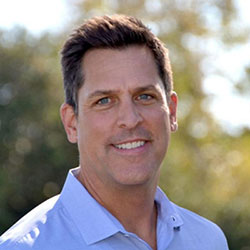Questions every company should ask to improve safety, and compliance risks, including those related to third-party contractors and vendors.
By Jeff Muto, Chief Marketing and Strategy Officer, Veriforce
As companies adapt to evolving and often complex health and safety measures and regulations to protect their workers, companies, and communities, they must ensure their entire workforce is up to speed. This includes the third-party contractors and vendors they increasingly rely upon. Ensuring their safety readiness and compliance is essential to managing and reducing risks across the supply chain, yet it’s no simple task.
Many organizations struggle with the administrative burden of identifying and managing safety objectives and requirements across projects and geographies, and it’s become exceedingly complicated as supply chains become more globalized and elaborate. In fact, half of organizations surveyed before the pandemic did not have an efficient way to gauge the safety qualifications and compliance of their contractors and sub-contractors (such as a formal vendor safety prequalification program) before hiring. This left them vulnerable to a hotbed of risks that could potentially lead to injuries, disruptions, and damage to work product, reputation, security, and the bottom line. Adding to the complexity of risk management is the often overwhelming work of keeping policies and procedures in sync with evolving regulations, and making sure all workers, across all locations, maintain the required training, insurance, and certifications to safely do their jobs.
Undoubtedly, safety and compliance managers need an efficient, comprehensive approach to supply chain risk mitigation, backed by modern technology and safety expertise. Whether creating an in-house solution or outsourcing one, companies can maximize their effectiveness by first asking themselves three key questions:
As organizations define and update their safety measures, the key for implementation is to consolidate them into a comprehensive risk management program that protects down to the worker level. This gives team members a single resource that can serve as the company’s definitive, go-to guide for every safety issue and requirement, from the technical specs and placement requirements for physical barriers around workstations, to protocols for sanitization and other procedures. Applications are nearly endless, and the right technology can encompass and manage them all.
The use of risk management platforms can simplify administrative tasks while giving employees and third parties systematic support for mitigating risks. Features such as vendor prequalification tools can provide the peace of mind a firm under consideration is up-to-date on its insurance and health and safety training. Over time, that same software can capture vendor safety data for analysis and guide organizations to make ongoing improvements to their safety program. Some risk management providers also offer services such as training, expert advice, and analytics to identify safety gaps and help to fill them.

A single resource that has a global impact.
Time and effort spent creating a holistic approach to supply chain risk management by leveraging a reliable safety and compliance platform for support enables companies to identify, prioritize, manage and mitigate risks, including those related to their third-party contractors, while maintaining their brand and reputation. It’s an investment that pays off in the form of optimal business operations and a safer workplace for everyone.

Jeff Muto
About the Author
Jeff Muto is the chief marketing and strategy officer for Veriforce, a global supply chain and risk management solution provider.
Scott Ellyson, CEO of East West Manufacturing, brings decades of global manufacturing and supply chain leadership to the conversation. In this episode, he shares practical insights on scaling operations, navigating complexity, and building resilient manufacturing networks in an increasingly connected world.